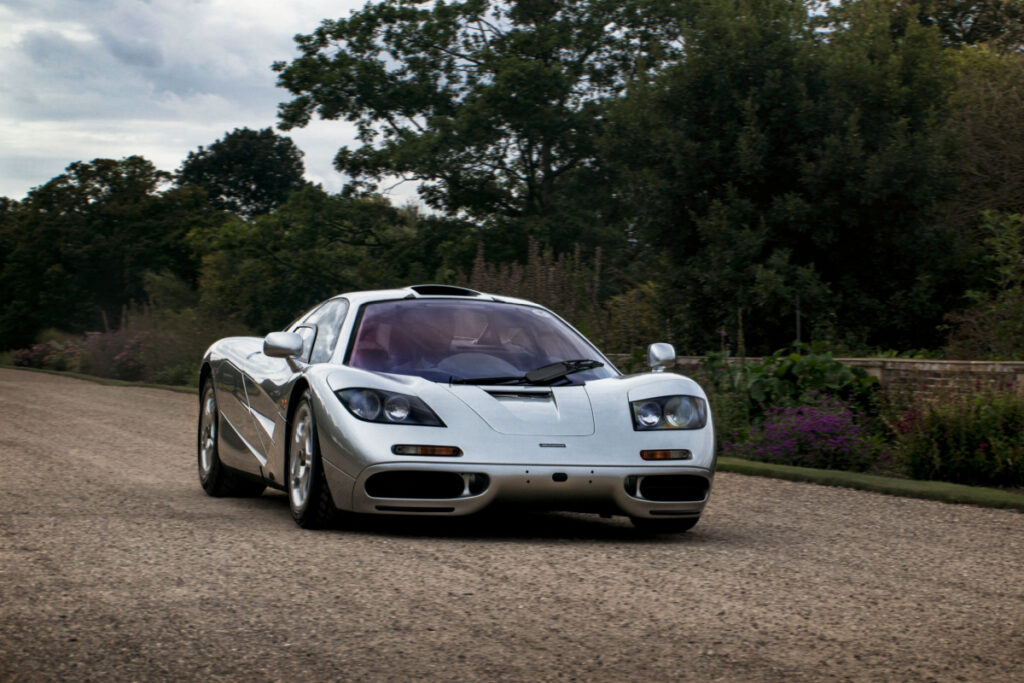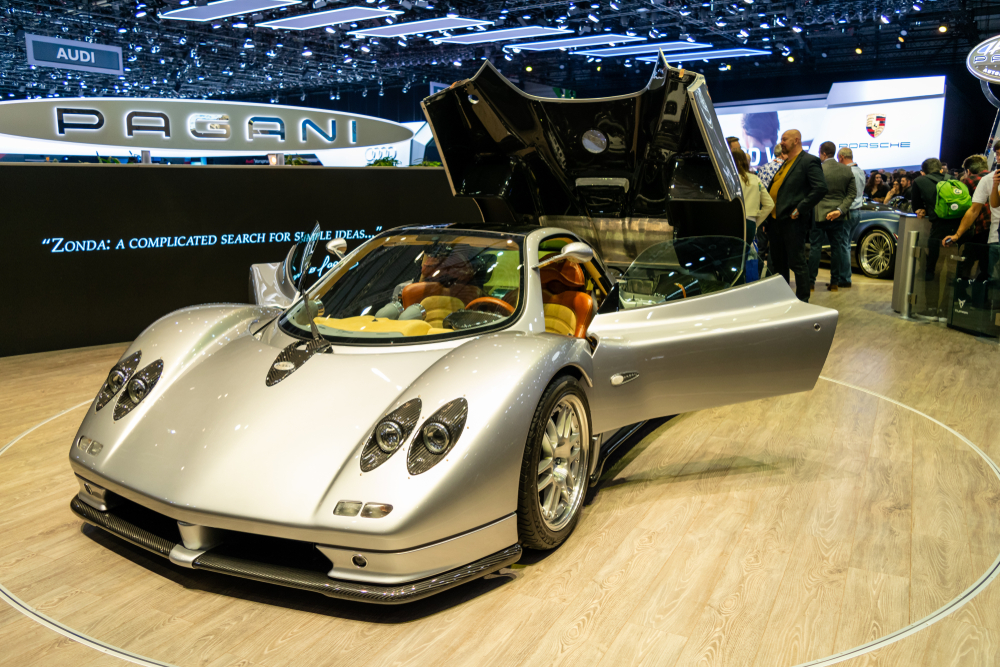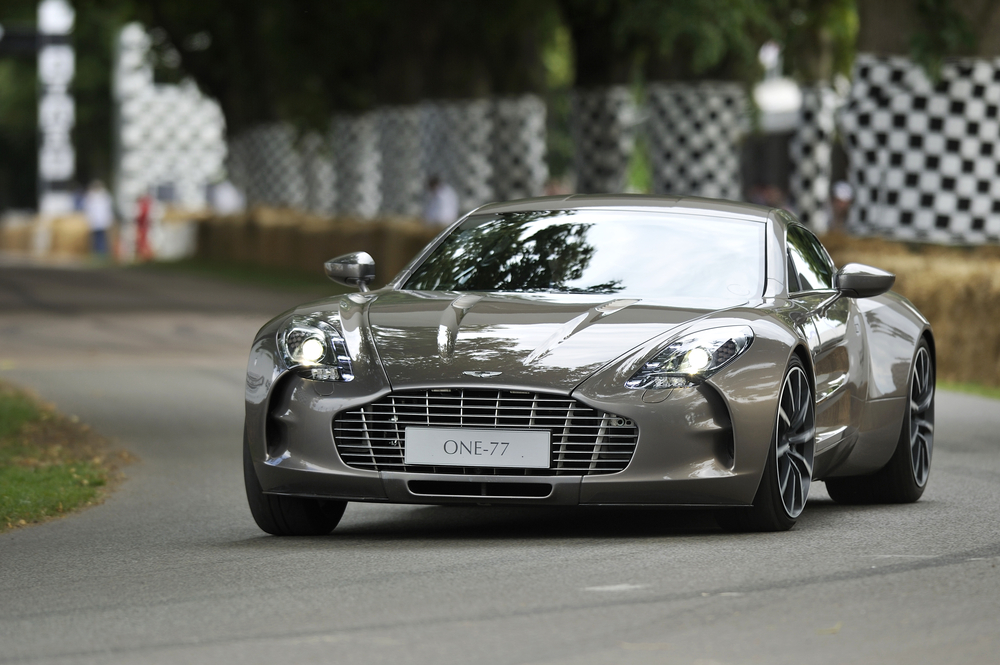When it comes to supercars, design is just as important as performance. Some vehicles go beyond the ordinary, pushing the limits of style and innovation. In this list, we’ll explore 25 legendary supercars that didn’t just follow trends—they set new ones. These cars left a lasting impact on the automotive world with designs that were truly ahead of their time.
Contents
Lamborghini Miura (1966)

Often regarded as the first true supercar, the Miura’s revolutionary mid-engine layout changed the landscape of high-performance vehicles. Its sleek, low-slung body, designed by Marcello Gandini, was paired with a powerful V12 engine. This combination not only set a new precedent for performance but also for car design, with its stunning curves and groundbreaking proportions that remain influential today.
Ferrari F40 (1987)

The F40’s design was pure, unfiltered aggression. Its lightweight construction, combined with a turbocharged V8 engine, allowed it to achieve blistering speeds. Its minimalistic, aerodynamically driven bodywork, large rear wing, and raw racing aesthetic made it not only a performance icon but also a symbol of Ferrari’s uncompromising design philosophy.
Jaguar XJ220 (1992)

With a futuristic and aerodynamic design, the XJ220 was one of the fastest production cars of its time. Its sleek, elongated body, coupled with advanced engineering like a twin-turbo V6 engine and lightweight aluminum construction, made it a forward-thinking car that pushed the limits of speed and styling.
Bugatti Veyron (2005)

The Veyron’s rounded, luxurious design set it apart from the angular shapes of most supercars. Combined with its quad-turbo W16 engine and impeccable craftsmanship, the Veyron redefined what a hypercar could be. Its ability to balance extreme power with a plush interior made it both a speed demon and a work of art.
McLaren F1 (1992)

The McLaren F1 was a car that blended function and futuristic form. Its central driving position, paired with a lightweight carbon fiber body and advanced aerodynamics, made it unlike anything else on the road. Its minimalistic, flowing design focused on reducing drag while creating a striking visual impact.
Lamborghini Countach (1974)

The Countach was a bold break from the traditional curvy designs of the 60s and 70s. Its sharp, wedge-shaped body, with scissor doors and angular lines, made it an instant design icon. Powered by a V12 engine, its futuristic aesthetics matched its blistering performance, making it a staple of poster-worthy supercars.
Porsche 959 (1986)

The 959 was ahead of its time in both performance and design. It featured advanced all-wheel drive, twin-turbo technology, and a sleek, aerodynamic body. Its rounded, modern look stood in contrast to the more angular cars of its era, making it a standout for its performance and its innovative appearance.
Ferrari 250 GTO (1962)

The Ferrari 250 GTO blended beauty with purpose. Its long, sleek curves were designed to maximize aerodynamic efficiency on the track, but its timeless elegance continues to capture the imagination of car enthusiasts. The 250 GTO’s combination of form and function has made it one of the most valuable and legendary cars in history.
Pagani Zonda (1999)

The Zonda was a masterclass in exotic design. Its aggressive, unconventional bodywork and attention to detail were groundbreaking. The intricate carbon fiber construction and artfully sculpted lines, paired with a roaring AMG V12 engine, made the Zonda a futuristic marvel that continues to influence car design today.
Ford GT40 (1964)

Originally designed to beat Ferrari at Le Mans, the GT40’s low-slung, aggressive body made it both a design and performance legend. Its wide stance, mid-engine layout, and race-inspired design made it an instant icon, achieving success on the track and a lasting legacy in automotive history.
Aston Martin One-77 (2009)

The One-77 was a masterpiece of craftsmanship and design. Its sculptural lines, combined with the power of a 7.3-liter V12 engine, made it both a performance beast and a visual marvel. The attention to detail in every curve and surface set it apart from other supercars as a work of art on wheels.
Koenigsegg CCX (2006)

The CCX’s design focused on aerodynamics, with sleek lines and a futuristic shape. Its use of lightweight materials like carbon fiber, combined with advanced technology, made it not only fast but visually striking. The CCX’s smooth, clean profile and scissor doors gave it a distinctive, forward-looking design.
Lamborghini Aventador (2011)

The Aventador’s angular, aggressive styling set a new benchmark for modern supercar design. Its sharp lines, large air intakes, and low, wide stance gave it a dramatic presence on the road. Paired with a powerful V12 engine, the Aventador’s design was as bold as its performance, solidifying it as a modern icon.
Maserati MC12 (2004)

Based on the Ferrari Enzo, the MC12 took supercar design to new lengths—literally. Its elongated body and sweeping curves gave it a unique, almost otherworldly appearance. The MC12 combined performance with a striking design that stood out from the crowd, offering a balance of elegance and aggression.
Ferrari Enzo (2002)

Named after Ferrari’s founder, the Enzo was designed with Formula One technology in mind. Its sharp, aerodynamic body, large rear wing, and signature Ferrari grille gave it a race-ready look. The combination of cutting-edge technology and aggressive styling made the Enzo one of the most futuristic cars of its time.
Lotus Esprit (1976)

The wedge-shaped Lotus Esprit brought a sleek, futuristic aesthetic to the 70s supercar scene. Its low, angular design focused on aerodynamic efficiency, and its fiberglass body construction was ahead of its time. The Esprit’s bold, sharp design still looks modern today, making it an icon of innovative automotive styling.
BMW M1 (1978)

The BMW M1 was a blend of sharp angles and sleek lines that made it instantly recognizable. As BMW’s first and only mid-engine supercar, it pushed the brand into a new design realm. Its low profile, sharp front end, and distinct rear louvers gave it a timeless look that still influences BMW’s sports car designs.
Vector W8 (1989)

The W8’s angular, wedge-shaped design took cues from aerospace engineering, making it one of the most futuristic-looking cars of its time. Its sharp lines, low profile, and aggressive stance gave it a spacecraft-like appearance. Despite being a rarity, the W8’s design has cemented it as a cult classic in the supercar world.
De Tomaso Pantera (1971)

The Pantera’s sharp-edged body, Italian styling, and American V8 power made it a standout supercar in the 70s. Its aggressive, angular design was bold and modern for its time, giving it a lasting appeal as a performance icon with a distinctive look that has aged gracefully.
Tesla Roadster (2008)

The Tesla Roadster broke the mold for electric cars with its sleek, minimalist design. It showed that electric vehicles could be both fast and stylish. With clean lines and a lightweight body, the Roadster’s design helped change public perception about electric performance cars, blending efficiency with forward-thinking design.
Alfa Romeo 33 Stradale (1967)

The 33 Stradale’s curvaceous design and low, wide stance made it a visual masterpiece. Its aerodynamic shape and elegant proportions helped it stand out as one of the most beautiful supercars of its time. The 33 Stradale was a perfect fusion of performance and art, setting a high bar for future car design.
Bugatti EB110 (1991)

The EB110’s rounded shape, scissor doors, and quad-turbo V12 engine made it ahead of its time. Its futuristic design, combined with technical innovations, redefined what a supercar could look like. The EB110’s smooth, flowing lines and technological prowess put it in a league of its own.
Lancia Stratos (1973)

Compact and aggressive, the Lancia Stratos was designed purely for performance. Its unique wedge shape and short wheelbase gave it a distinctive look, making it ideal for rally racing. The Stratos’ daring design and innovative engineering set it apart as a car that prioritized both form and function.
Nissan GT-R (2007)

Known as “Godzilla,” the GT-R’s sharp, muscular design helped define the modern sports car. Its angular lines, wide stance, and advanced aerodynamics gave it a powerful and imposing look. The GT-R’s aggressive design paired with high-tech engineering made it an instant icon in the world of performance cars.
Cizeta V16T (1991)

With its wide, flat profile and 80s flair, the Cizeta V16T looked like a spaceship on wheels. Its unique design, featuring a V16 engine and bold styling, set it apart from other supercars of its era. The V16T’s blend of avant-garde aesthetics and raw power made it a car ahead of its time.
This article originally appeared in MyCarMakesNoise.
More from MyCarMakesNoise
20 Luxury Cars with Surprisingly Affordable Maintenance Costs

Luxury cars are often associated with high maintenance costs, but some models offer the best of both worlds: luxury and affordability in upkeep. Here are some luxury cars with surprisingly low annual maintenance fees, making them excellent choices for those seeking both elegance and cost efficiency. Read More
20 Cars That Don’t Deliver Good Value for Middle-Class Buyers

When choosing a car, it’s important to consider the long-term costs and practicality. Some vehicles, despite their appeal, can be expensive to maintain and own. Here are some cars the middle class should avoid due to high maintenance costs, poor fuel efficiency, and rapid depreciation. Read More
The 20 Most Expensive States for Buying a Used Car

Buying a used car can be a smart financial move, but prices vary significantly depending on where you live. Some states have much higher used car prices due to factors like demand, taxes, and market conditions. Read More














